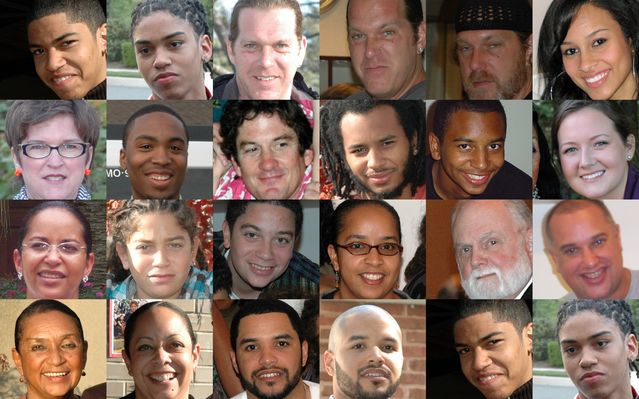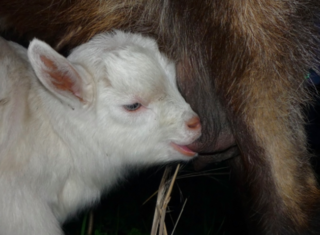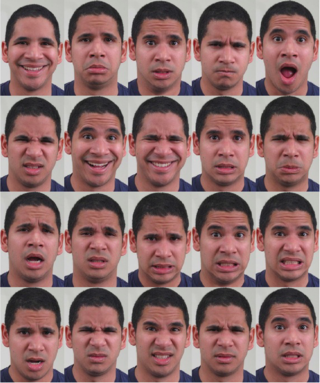Child Development
What's In a Face?
The great diversity of human faces tells us of our past.
Posted June 28, 2017
Human faces come in all shapes and sizes. It really seems that no two faces are the same. With over 7 billion people on the planet, there are a whole lot of different mugs out there.

Is this facial diversity unique to humans, or do other species also have just as wide a variety that we just don’t appreciate?
It turns out that humans really are unique among the animal kingdom for having such a tremendous diversity in our faces. No other mammal, bird, or reptile that we know of has as much variance in facial features as do humans. This is especially surprising given that Homo sapiens is a relatively young species that has experienced a lot of population bottlenecks and founder effects over the past few thousand years. In other words, we humans have a much lower degree of genetic diversity among us than do many other species. And yet, our faces display a stunning array of diversity.
Each individual ethnic group has an even lower amount of genetic diversity than the population at large, but the wide range of facial shapes and features still holds within specific races and ethnicities. Moreover, as a new study makes clear, humans vary in our facial structure more than we do in any other physical feature. This striking degree of diversity in a physical characteristic, despite low genetic diversity, is unexpected and thus calls out for an explanation.

We do a lot with our faces. The face is one of the first means by which human infants communicate. As babies, we can make a variety of facial expressions before we are even born. Adults and even children can easily recognize and interpret these facial expressions with no real “learning curve” involved. Even more interestingly, babies begin to respond to facial expressions extremely early in their development. The face is the means by which we send and receive communication long before words or even gestures, and this communication is more precise and nuanced than clumsy cries and grunts.
There are more than 40 muscles in the human face. There is even some diversity in that number, with some people having a couple more or less. Most facial muscles are quite strange as muscles go. This is because most skeletal muscles attach to two different bones on both ends. Not so with facial muscles. They attach to the skull on one side and to soft tissue on the other end. This means that most of the face muscles do not move bones around, like other muscles do. Instead, all they can do is squish and squirm and pull the tissue of the face into various forms. There is no other place in the body that has muscles like that.

Mammals are unique in having muscles for facial expressions, while birds, reptiles, amphibians, and fish are rather expressionless in their faces. The original purpose of these facial muscles was to perform another function unique to mammals: suckling. Only mammals can pucker their faces to apply a vacuum of negative pressure, a skill that developed hand-in-hand with the evolution of milk production. In fact, the word “mammal” comes from the same latin root as “mammary,” meaning breast.
However, most mammals have a small number of facial muscles and can make only a few crude expressions. It was the first primates that took things to a new level when it comes to facial expressions and many of our great ape cousins have nearly as rich an array of facial expressions as we do.
The impressive array of facial expressions and the incredible diversity of facial shapes and structures both highlight an important feature of human beings: we have a spectacular inborn ability to recognize patterns. This skill in pattern recognition is manifest in many ways, but perhaps chief among them, our ability to recognize faces and facial expressions. This skill emerges very early in child development and requires little or no training. In other words, this ability is genetically programed, not learned, and was the result of natural selection.

What is the biological benefit of facial recognition? For facial expressions, this is rather obvious. Expressions are a form of communication and animals living in community benefit from clear means of communication. So developed is our ability to recognize and interpret faces that we see them even when they’re not there and we even ascribe emotional states to the inanimate faces that we see all around us.
Putting our ability in facial recognition together with the incredible diversity of human faces, we are reminded just how face-centered human social interactions are. More than any other species, humans look at each other’s faces, especially when we are in communication. Watch other animals when they see each other and interact. None of them pay as much attention to faces as we do.
With this in mind, it begins to make sense why humans have evolved such an impressive diversity of facial features. Our faces were key to our individuality, our communication, and our connection to other people. In other words, our faces were, and still are, a central aspect of our sociality. Although nearly all mammals have complex social interactions and stratified hierarchies, humans rise above all others in that regard.
Evolution explicitly favored diversity in human faces because a wide array of faces makes it easier to discriminate a friend from a foe, a mother from a stranger, and a brother from a rival. Many other mammals achieve this kind of personalization through scent, most notably dogs. But our sense of smell is not nearly as developed as that of dogs. What they do with their noses and their unique scents, we do with our eyes and our unique mugs.
Moreover, as communication through facial expressions became more and more important to primates, there was an increasing advantage to evolve a diverse palate for making those expressions. What’s in a face? A whole lot.
References
Sheehan, M. J., & Nachman, M. W. (2014). Morphological and population genomic evidence that human faces have evolved to signal individual identity. Nature communications, 5, 4800.




